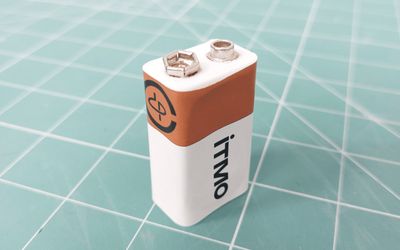Qoitech Otii Battery Toolbox
Solution for battery profiling, battery simulation, battery testing and validation.
General
| Product Type | Measurement & Testing Equipment |
| Applications | Power Management, Data Logging & Monitoring, Research & Education, Prototyping & Development |
| Key Features | Software License |
Technical Specifications
| Points in Emulation | as many as no of iterations |
| ESR Range (1) | up to 5 kohm |
| ESR Resolution | down to 1 mohm |
| Voc Range | 0V to 25V |
| Voc Resolution | 1 mV |
| Capacity Range | no limit |
| Capacity Resolution | 1 μAh |
Overview
The Otii Battery Toolbox is a software license that enhance the software capabilities of the Otii Product Suite to enable battery profiling, battery simulation, battery testing and validation for low-power embedded and IoT devices. It can be purchased as monthly/yearly subscription or perpetual license.
The Otii software + Automation Toolboxes run on Windows, Ubuntu, and macOS.
Specifications
Battery validation: Charge, discharge in single or multiple steps, cycle discharges, and design custom scenarios. Test and validate one or multiple batteries in real time.
Battery profiling: Create discharge profiles of the batteries with specific conditions for the discharge that reflect how your application is behaving. Use these to emulate batteries.
Battery emulation: Use any Otii box to act as a battery, following a discharge curve of your specific discharge profile. Simulate battery, get the real capacity value for your application.
Battery Toolbox can be use for:
Powerful and cost efficient scalability: Easily scale and reconfigure battery measurement units to match batch validation, benchmarking, or qualification needs, offering flexibility for any task.
Build your own realistic discharge-charge profiles: Validate battery performance with flexibility by creating profiles of device behavior. Combine discharge, sleep, and charge states, and customize discharge steps easily.
Cycle the batteries: Test battery durability by cycling through full charges and discharges to assess aging and stability. No limit on the number of cycles for accurate evaluation.
Simple set-up for battery profiling: Otii Arc Pro sinks 2.5A, sources 5A, and monitors 50nA-5A with 0.1% accuracy. Otii Ace Pro sinks/sources 5A, monitors 25nA-5A with 0.05% accuracy. Connect multiple units via USB hub to discharge batteries simultaneously.
Model sleep & active modes: Create battery discharge profiles to match your application behavior, with low discharge for sleep mode and high discharge for active mode conditions.
Three options for battery discharge: Discharge with constant current, keeping current steady as voltage drops. Discharge with constant power, adjusting current as voltage drops. Discharge by simulating a resistance connected to the battery.
Use Otii hardware as battery: Otii hardware simulates a real battery by following your custom discharge profile. It adjusts output voltage based on load, mimicking internal resistance and voltage drop.
Fixed and follow discharge options: Use “Fixedˮ emulation to simulate the battery at a constant “Used capacity,ˮ staying at a specific point on the discharge curve. Instead, the “Followˮ option simulates real-time discharge, adjusting the batteryʼs behavior as energy is consumed, with the position on the curve moving as your device draws power.
Parallel and series battery set-ups: Emulate setups with battery cells in parallel (up to 4 cells) or in series, depending on the Open Circuit Voltage (OCV). Max OCV: 5V for Otii Arc Pro and 25V for Otii Ace Pro.
References
Recommended Specs
Continue Reading
In spite of their many disadvantages, batteries remain one of the key components in contemporary electronics. While changing their structure entirely is impossible due to the chemical and physical processes happening inside, scientists, startups, and major companies are searching for ways to reinvent them or adopt totally new approaches.














